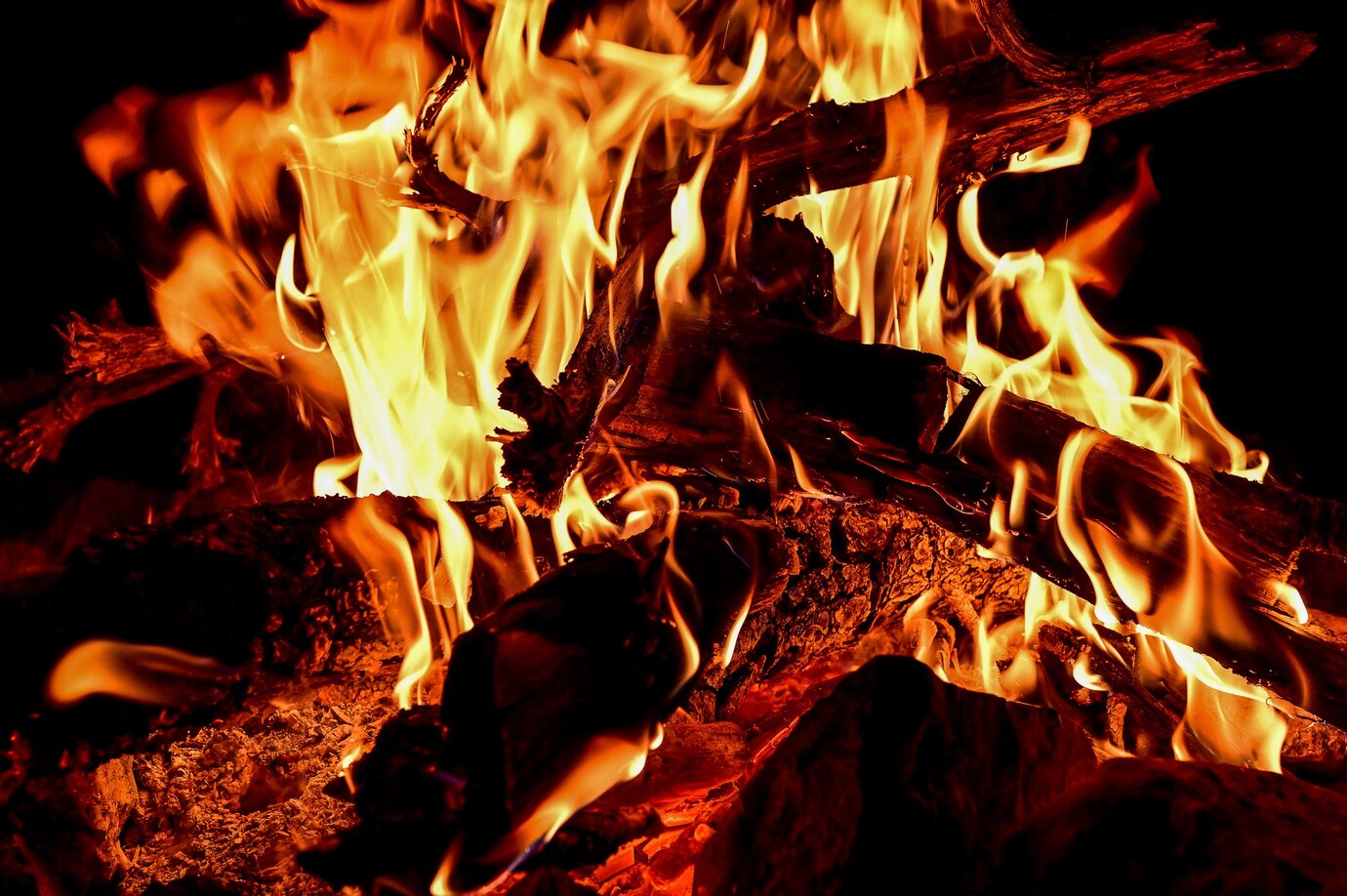
You are on a trip with your friends in the middle of a forest, ready to start a bonfire and barbeque marshmallows. As soon as you gather the wooden logs, you reach your hand into your pocket and hold your lighter to light it. You anticipate that little flame of fire ready to commence your bonfire night. But all you get is the sound of a click and no spark.
The ability to ignite a fire without an actual lighter takes us back to our ancient roots. Whether you’re negotiating rugged terrain or simply going on a camping trip, knowing the age-old skill of firecraft can make all the difference.
Here are several inventive and effective ways to start a fire using things you never realized could be used for ignition.
Lighting a Fire Without a Lighter
When traveling into the great outdoors, knowing how to make a fire without a lighter is essential. While classic methods such as iron and flint remain ageless, this article delves into using common and ordinary items as unique fire starters.
There can be moments when your lighter isn’t trusty, and you want to get warm in the chilly weather. Here is when traditional practices of lighting a fire come into use.
Natural resources like dried leaves and twigs can be used to start a fire when combined with equipment like a fire-striking knife or rough rocks. Learning to start a fire without a lighter is an engaging adventure that combines material knowledge and an enthusiasm for fire.
Steel and Batteries Dynamo
Steel and batteries are identified for their versatility, which can also serve as an efficient fire starter besides being used in electrical appliances. If you are carrying a torch or any device that runs on batteries, you have an opportunity to ignite a fire easily.
Take the batteries out and find their terminal ends. Collect your steel wool and rub the batteries against it. This will cause friction between these objects and create sparks due to the voltage of the battery.
Once the spark is generated, gently blow on the steel wool to nurture the flame. When your lighter runs out of gas or doesn’t function, steel and batteries make sure that you do not miss out on your barbeque night.
Kindling with Charred Cloth and Knife
Charred cloth is a great way to start a fire. The first thing that you need to do is to find a rock that is rough and easily fits your hand. Hold your charred cloth on the rock, exposing some part of the latter.
Take out your knife and start striking the rock with the charred cloth getting scraped against it. Since char clothes are made from charcoal pieces, these are combustible in nature.
You can use the charred cloth and knife to light larger heat sources like big wooden logs for more heat once they’ve caught fire.

Papier-Mâché Pyre
When you need help starting a fire, use paper as a reliable kindling source. Crumple newspapers, magazines, or any other form of paper into balls and make a “bird’s nest” out of it. You can also add paper twigs and leave them to maintain a steady and long-lasting flame.
Collect various kinds of paper with varying textures and thicknesses to promote a layered burn. This is especially effective when striving for stable flames for moist wood drying or lighting more extensive logs.
Create a spark with your knife or rocks and expose your paper nest to it. Since paper has a low combustible point, it can be easily lit even with a spark, saving you from the extra load of work.
Wooden Hand Drill
When out camping, it is better to rely on the resources you have near you before starting a fire. In this case, wood is readily available and can be used to ignite a campfire.
All you have to do is find a flat piece of wood to use as a base and a stick that doesn’t break easily. Use a knife or a sharp stone to create a small cut on the flat base. After that, rest your stick on that cut and start rolling it back and forth between your palms.
This will create friction and some embers inside the cut. Carefully remove the embers, place them on dry fungus, grass, or twigs, and gently blow on them. As the air contains oxygen, it will encourage the combustion of the wood.
Tried and Tested Age-Old Method
What can be better than implying a tried and tested method? Fire was invented due to the friction of the rocks and since then, humans have used it for their survival. When you run out of ideas and items to ignite a fire, relying on the old trick is wise.
Take sharp and rough rocks and collect some dry grass or wood that can be easily lit. Strick the rocks with each other to create a spark. Ensure the dry grass is kept near the spark so that it catches fire quickly.
You can also use the rocks to scrap some wooden shavings. While these shavings do not produce direct flames, they act as good ignition for bigger fire materials. This approach of firecraft demonstrates how ancient methods can sometimes be useful when modern methods fail.

Conclusion
Learning to build a campfire without a lighter strengthens your outdoor abilities. Mastering peculiar fire-starting means improving your survival skills and strengthening your connection with the wilderness.
These approaches, which emerge from creativity under challenging conditions, illustrate the route to independence. Practicing the ancient skill of firecraft, especially when you don’t have a lighter, not only warms your surroundings but also represents the cleverness required in the big outdoors.

Tech Hub Digital, a one-stop destination for complete technology-related information.

